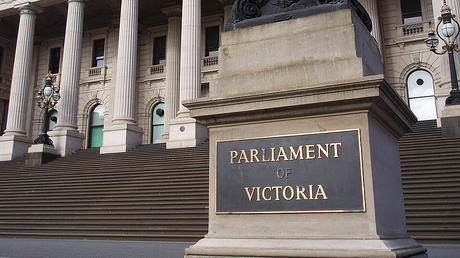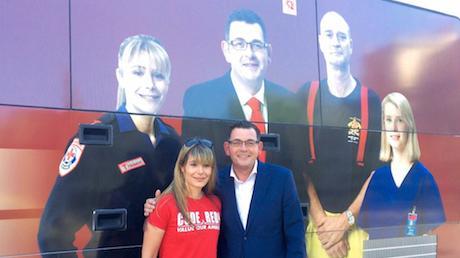Since the middle of this year the Liberal-National Government of Dr Denis Napthine has always been behind Labor on the two-party-preferred vote, sometimes by very large margins:
- In June, Newspoll (in The Australian) had Labor ahead 54%-46%, and Nielsens (Fairfax Media) had Labor ahead 56-44
- In July, Nielsens, in their final poll for Fairfax before discontinuing their political polling operation in Australia, had Labor ahead 51-49. This was the closest any Victorian poll results had been since June.
- In August, Galaxy (in the Herald Sun) had Labor ahead 52-48, and a week later Newspoll had Labor ahead 55-45.
- In September, Newspoll had Labor’s lead down to 51-49.
But the election might be closer than these numbers suggest. History tells us that the very large margins will not be replicated on election day, 29 November. Elections in Australia are often decided by a margin of one or two percentage points, and occasionally within a single percentage point of the 50-50 mean – 50.5% to 49.5%, for example.
A margin of five or six points results in a landslide. The one that swept former Prime Minister Kevin Rudd and Labor from office federally last year, for example, resulted from a two-party-preferred vote of 53%-47%, in round numbers.
Another reason to suppose that this election might be closer than these numbers indicate is that Labor’s vote is not as impregnable as the two-party-preferred results suggest. It is derived in part from a big injection of Greens preferences. Labor’s primary vote has ranged between 35% and 42%, and most often has been in the high thirties.
Meanwhile the Greens have been polling between 12% and 16%, and it is the distribution of their preferences, usually based on how those preferences went at the 2010 election, that gives Labor its apparently healthy two-party-preferred vote.
Counting against a life-saving recovery by the Liberal-National parties, however, is the potential drag on their support caused by the unpopularity in Victoria of the Abbott federal government. An analysis of available poll data by Crikey’s Poll Bludger (William Bowe) shows a 2.7% swing against the federal Coalition in Victoria since the 2013 national election.
Of course, this has no statistical connection to the Victorian voting intention, but it is indicative of negative voter sentiment towards the Coalition parties.
Muddying the waters somewhat is the effect of a redistribution carried out by the Victorian Electoral Boundaries Commission since the 2010 election.
An analysis of the political impact of this redistribution written by the ABC’s election analyst Antony Green for the Victorian Parliamentary Library shows that Labor needs to win more seats than it did under the old boundaries if it is to win office, but needs a smaller uniform swing to do so. The bottom line is this: on the old boundaries, Labor needed to gain two seats on a uniform swing of 1.2% to achieve majority government; on the new boundaries it needs five seats on a uniform swing of 0.9%.
It might help Labor’s cause that, on the new boundaries, there are notionally more marginal Liberal seats than before (nine compared with five), and fewer marginal Labor seats (seven compared with eleven). And of the nine notionally Liberal marginals, five are currently held by Labor. “Marginal” in this analysis means a seat with a margin of 2.5% or less.
So, despite the apparently bold numbers in Labor’s favour, this election is far from a foregone conclusion.
Dr Denis Muller is Senior Research Fellow and Senior Lecturer in the Centre for Advancing Journalism at the University of Melbourne.
Original image via Derrick Coetzee/ Flickr.




